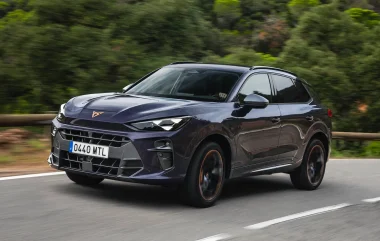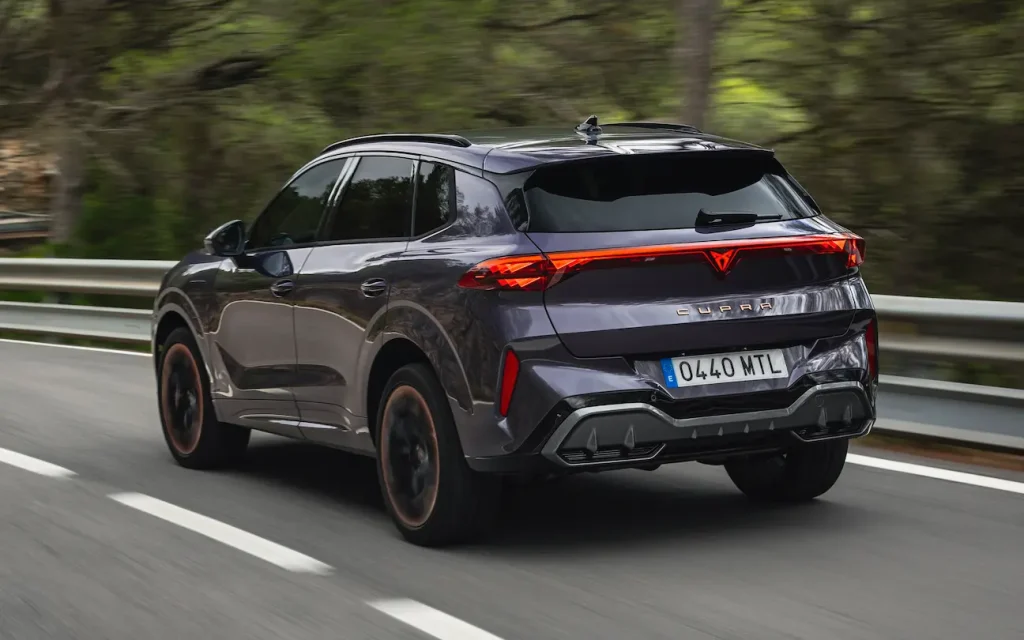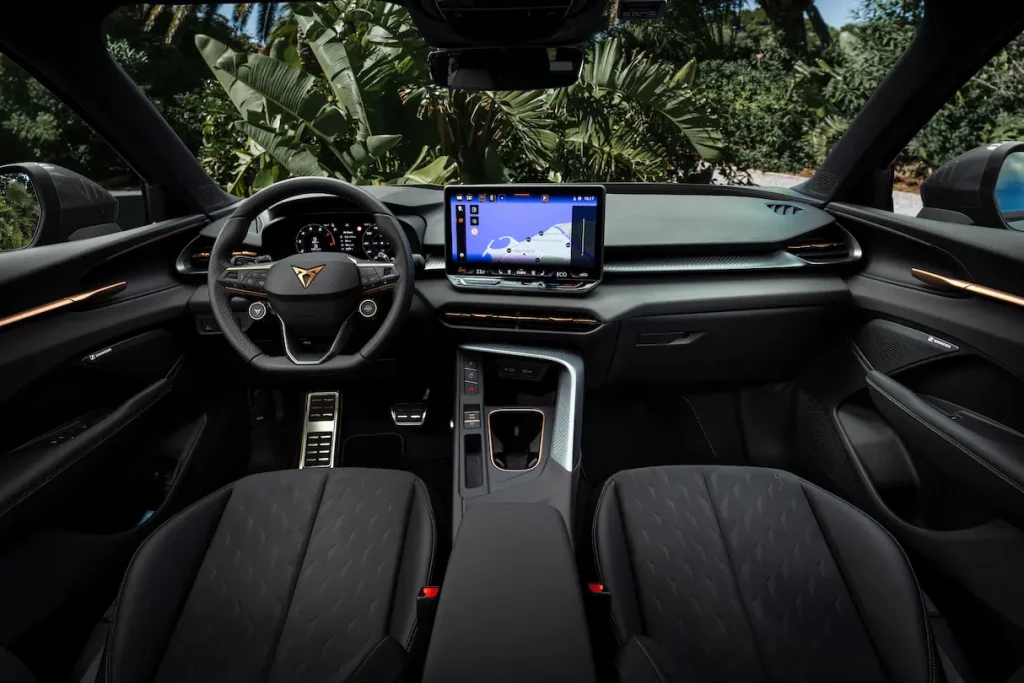
Cupra has come a long way since its foundation as a sportier spin-off from Seat in 2018. It currently has five models on sale, and this number will grow to six with the launch of the model tested here, the Terramar. A medium-sized SUV, Cupra says its introduction means it now has a full model portfolio – although it already has a model in this segment, the Seat-derived Ateca, which remains available. According to Cupra, the sports-focused Terramar (a name taken from a historic racetrack) is designed to move it upmarket in the segment.
Performance and drive
There’s a choice of petrol, petrol mild hybrid, and plug-in hybrid powertrains, with the latter sure to catch most fleet interest, thanks to a highly-impressive expected EV-only range of over 70 miles, meaning it would incur only 5% BIK company car tax (confirmed WLTP figures are pending). With the most powerful PHEV, acceleration is fairly rapid, but perhaps not so much as the 272hp headline power output would suggest, with the inherent complexities of the plug-in hybrid powertrain dulling throttle response. Choosing the sportiest ‘Cupra’ option from the selectable drive modes brings in an artificial sort of faux V8 engine note, which is amusing if not particularly convincing. The powertrain feels better suited to a motorway cruise, where the Terramar is quiet and refined.

As for the rest of the driving experience, as a plug-in hybrid, we’re not sure the Terramar entirely makes good on its sporting pretensions. It’s decent enough for the segment, gripping fairly well and with decent body control, but it doesn’t feel like the last word in agility and responsiveness. The 265hp petrol version we also tried – which is 154kg lighter – is much better in this regard, feeling more nimble and with flatter cornering that you can really lean on (as well as quicker acceleration), turning the model into a far more satisfying sporty SUV.
The Terramar comes with sports suspension as standard, and consequently the ride feels geared towards the firm side, but it’s not unreasonable or uncomfortable, and major road surface disturbances are handled well.
Interior
The Terramar’s cabin trim has a cool, sporty appearance, with bronze detailing adding visual interest, although with the VZ First Edition version tested here we’d say the quality of the materials was slightly off-pace for a top-spec model. From the driver’s seat there’s a feeling of being cocooned in a cockpit, with the infotainment screen angled towards you, helping to bring controls easily to hand, while sporty bucket seats offer good support on twisty roads. As well as being controllable via the Volkswagen Group’s often-criticised sliders, temperature settings can also be adjusted directly on the touchscreen.

Rear legroom is decent, and headroom is good even with the sunroof fitted to our test car, with the ceiling cleverly sculpted to create extra space (though this doesn’t apply in the middle seat where things are tighter).
At 400 litres, the boot in the PHEV is 140 litres smaller than that with the petrol – however, all Terramars have a sliding rear seat which allows useful extra space to be created, at the expense of rear legroom.
With UK orders for the Terramar opening in late November, and the first deliveries due in March next year, it’s too early for us to have access to whole-life cost data for the model, but some initial comparisons are possible. Perhaps in line with Cupra’s upmarket claims for the model, the Terramar looks expensive on P11D compared with equivalent PHEV C-segment SUVs such as the Ford Kuga and Kia Sportage. It does undercut them with that expected 5% BIK rate, meaning it will incur cheaper company car tax payments. However, that’s an advantage it doesn’t have compared with its cousin, the Volkswagen Tiguan, which also comes in cheaper while sharing the same low-tax powertrain.
From a fleet point of view, the Terramar represents something of a dilemma. The petrol version is far more convincing as the sporty SUV the model sets out to be, but for company car drivers its massively higher CO2 emissions (incurring 37% BIK payments) compared with the PHEV make the latter a no brainer, which will therefore prevent fleet drivers from enjoying the Terramar at its best.
Positive: PHEV range, stylish interior, practical sliding rear seat
Negative: Compromised driving dynamics with PHEV, not cheap to buy
Standard equipment: LED headlights, rear 3D lights, dark tinted rear glass,electric tailgate with virtual pedal, heated and electrically folding door mirrors, 10.25in digital cockpit display, 12.9in touchscreen with sat-nav, wireless phone connectivity, wireless phone charger, keyless entry and start, three-zone climate control, heated steering wheel, front and rear parking sensors, reversing camera, adaptive cruise control, rain-sensing wipers, dynamic road sign display, lane assist.
Engines: Petrol: 204hp 2.0, 265hp 2.0; Petrol mild hybrid: 150hp 1.5; Plug-in hybrid: 204hp 1.5, 272hp 1.5
Equipment grades: V1, V2, VZ1, VZ2, VZ First Edition, America’s Cup Edition
Transmissions: Six-speed automatic, seven-speed automatic
| Model | Cupra Terramar VZ First Edition 1.5 e-Hybrid DSG-auto 272PS |
| P11D | £51,735 |
| On sale | November 2024 |
| Residual value | TBC |
| Depreciation | TBC |
| Fuel | TBC |
| Service, maintenance and repair | TBC |
| Cost per mile | TBC |
| Fuel consumption | TBC |
| CO2 (BIK%) (provisional) | 9-12g/km (5%) |
| BIK 20/40% a month (provisional) | £43/£86 |
| Luggage capacity | 400 litres |
| Engine size/power | 1,498cc/177hp with 116hp electric motor |
| Score | 7/10 |





